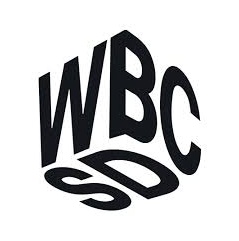The call to action is loud and clear: in May, Federica Marchionni, CEO of the Global Fashion Agenda, declared at the Global Fashion Summit that “all companies need to move away from business as usual,” stressing the need for the fashion industry to take sustainability to the “next level” to meet its 2030 and 2050 sustainability goals.
Meanwhile, lack of recycling and clothes ending up in landfills continues to cost the industry $460 billion annually (UNEP, 2023), and $65 billion in apparel exports remain at risk from climate change-related events such as floods and heatwaves (BoF and McKinsey, 2023).
Good reasons to be optimistic
But there is good reason to be optimistic: innovative circular business models such as resale, rental, repair and remake could grow by up to 23% by 2030, representing a $700 billion opportunity and a third reduction in emissions associated with the fashion industry (EMF, 2021).
In short, regulatory changes continue to bring about positive transformation in the fashion industry. Multinational companies trading in Europe will have to report on their use of circular resources under the new Corporate Sustainability and Reporting Directive (CSRD). And since the fashion and textile industry is considered a high-impact sector, new rules will soon be introduced aimed at reducing textile waste and supporting the eco-design of products (Ecodesign for Sustainable Production Regulation, ESPR). Furthermore, mandatory digital product passports will facilitate traceability throughout the value chain, increasing transparency for investors and consumers.
Expanding circularity and enabling change
Circular solutions are the only way companies can achieve their profit and sustainability goals. Our goal is to help companies scale circularity and realize transformation across their value chains. We achieve this with the CTI Fashion Initiative and the Circular Transition Index (CTI). The CTI Fashion Initiative helps companies gain compelling insights into how circular business models create financial, environmental and social value, and the Circular Transition Index gives companies an easy-to-use approach to measure the performance of their circular business models. We help companies build on regulatory requirements and communicate the value of circularity to shareholders and stakeholders.
According to the CTI index, using recycled polyester instead of virgin polyester allows companies to significantly reduce their carbon emissions, and using circular alternatives to cotton (certified recycled) reduces land use and land use change impacts by 91% and 95% respectively compared to linear cotton. Circular solutions also allow for up to 95% water recovery.
Take your CTI to the next level
Circular actions go beyond achieving net-zero and nature-friendly goals to also contribute to a fairer world. Indeed, circularity can enable a production and consumption model that promotes a more just society. This requires careful management to move away from inequalities in linear supply chains, prevent burden shifting, and achieve a more equitable model. For this reason, WBCSD’s CTI will update its circular indicators to measure the quality of jobs created by circular business models. This year’s CTI will showcase the value of circular business models and explore the key drivers for scaling the transformation. Furthermore, we are working with leading circular companies in the fashion and textile value chain to develop cutting-edge approaches to measure circular progress.
We invite you to join us on this journey – our metrics, knowledge and commitment to scaling circularity will help you transform your business and drive circularity forward.
(Press release image: https://photos.webwire.com/prmedia/6/324855/324855-1.jpg)
Related Links Source
Webwire ID 324855
This news content was compiled by WebWire editorial staff. Links are permitted.
A news release distribution and press release distribution service provided by WebWire.


